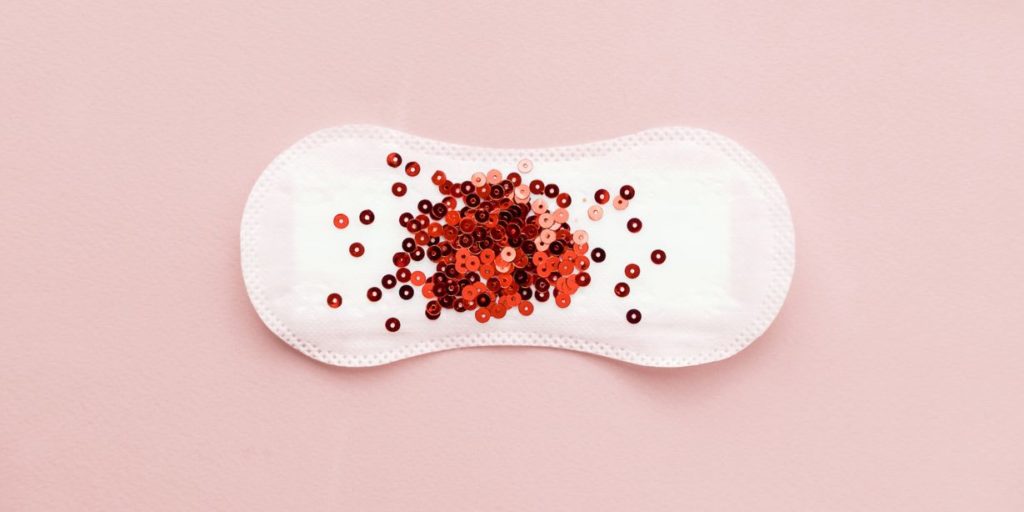Ovulation is a process when an ovary releases an egg. The egg travels down the fallopian tube towards the uterus. If the egg is not fertilized within 24 hours after it is released, it will break down and will be shed two weeks later with the period. Light bleeding can occur around the time of ovulation. Not every woman experience bleeding during ovulation. According to a study it was found that only 3 percent of women have spotting in the middle of the cycle.
Spotting is light vaginal bleeding which happens outside of the regular periods. This bleeding is much lighter as compared to the normal period bleeding. Bleeding during ovulation is bleed or spot which is seen in the middle of the cycle. It may happen a week after the periods are done.
The colour of the blood can give the cause of the bleeding, because the colour changes depending on the speed of the blood flow. The colour can be light pink or red in colour. Pink colour suggests that it is a sign that the blood is mixed with cervical fluid. Cervical fluid is produced more during ovulation. This bleeding can last a day or two.
Bleeding During Ovulation: Things to Know
When Does Ovulation Bleeding Occur?
The period for ovulation occurs between 11 and 21 days after the first day of the last period, it depends on the length of the cycle which may be sooner or later in some women. Ovulation can also happen at various times during a woman’s cycle and may take place on a different day each month.
Ovulation can be tracked to improve the chances for becoming pregnant and also a way to prevent pregnancy.
Why Does Ovulation Bleeding Occur?
It may be caused by rapid hormonal changes that occur during ovulation. According to a study, higher levels of luteal progesterone and luteinizing hormone around ovulation were seen in women who experienced ovulation bleeding.
Causes of Bleeding During Ovulation
It exact cause of bleeding during ovulation is not known. Some possible following causes can be considered –
- As the level of estrogen lowers during ovulation, the thickness of the uterine lining decreases as it begins to shed the tissue. This can be considered as the origin of the bleeding during ovulation.
- When an egg is released, the mature follicle bursts out of the ovary, which may rupture it and lead to bleeding.
Relation Between Bleeding and Pregnancy
If ovulation bleeding occurs, try to conceive around this time which can be ideal. Ovulation bleeding indicates fertility, this is the optimal time for a couple to try for a baby. After consulting the doctor, if it is confirmed that the mid-cycle bleeding is not serious complication and a sign of ovulation, sexual intercourse around this time can boost chances of pregnancy.
Heavy Bleeding During Ovulation
If there is severe and heavy bleeding with pain it is an indicator of serious complications. If there is more than one cycle of bleeding, it is possible that there is no ovulation. Reasons behind the bleeding can be conditions like polyps in the uterus, endometriosis and irritable cervix. Consult the doctor and immediately perform an ultrasound and hysteroscopy and get the right diagnosis.
Mid Cycle Bleeding
It is also termed as abnormal uterine bleeding is bleeding that occurs outside the menstrual cycle. Mid-cycle bleeding causes can vary based on the condition. It could happen due to ovulation, abnormalities in the cervix and endometriosis. It is mainly caused by ovulation and indicates the fertility. Try to get pregnant when bleeding mid-cycle which increases the chance of pregnancy. However, it is not a symptom of pregnancy.
There are a lot of reasons that mid cycle spotting occurs, the following symptoms can be considered-
- Hormone balance disruption
- Ovarian cyst rupture
- Uterine fibroids
- Sexual intercourse
Other less common causes of mid cycle spotting include-
- Excessive exercise
- Hormonal contraceptive use
- Intrauterine device (iud)
- Pelvic inflammatory disease (pid)
- Abnormalities of the cervix (hpv or cervical fibroids)
- Luteal phase defect (lpd)
- Poor nutrition
Conclusion
Spotting or bleeding can be noticed by some women for a day or two after ovulation. Ovulation is the time for most fertility. If pregnancy is avoided, make sure not to get ovulation spotting confused with menstrual bleeding. It can be common for some women and no treatment is required. There is no reason to be alarmed about thus. If the mid cycle bleeding administered heavy spotting and severe cramps and discomfort, it may be due to other complications. If there is something serious, go consult the doctor to avoid further complications. The doctor will perform an ultrasound to know the cause of the bleeding.













